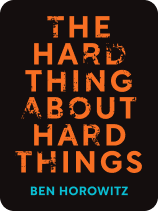

This article is an excerpt from the Shortform book guide to "The Hard Thing About Hard Things" by Ben Horowitz. Shortform has the world's best summaries and analyses of books you should be reading.
Like this article? Sign up for a free trial here .
Why did Opsware transition from servers to software? What did Ben Horowitz do to make the company so profitable?
Ben Horiwitz, co-founder of Loudcloud, bought Opsware in hopes of saving Loudcloud from going under. Horowitz took the struggling Opsware and turned it into multimillion dollar company which HP acquired in 2007 for over a billion dollars.
Continue on to learn how Ben Horowitz managed to turn Opsware around.
Loudcloud Acquires Opsware
While Horowitz saw the sale to EDS as a victory, Wall Street didn’t see it that way. Their stock fell to a low of $0.35 per share, representing a valuation of $30 million. This was half the $60 million in cash they had in the bank—a sign that investors thought Loudcloud was likely to go bankrupt.
Opsware was left with about 80 employees (150 had moved to EDS with the sale and another 140 were laid off). Horowitz even had to lay off loyal senior executives who had been appropriate for the server business but knew nothing about the software business. It was depressing but necessary—they were in survival mode.
Their task now was to create a product worth buying. Their software Opsware currently ran only on Loudcloud; they needed to generalize the software so any company could use it on any server platform.
Big Changes for Opsware
As typical, Horowitz and the team ran into existentially threatening problems:
- Their largest company EDS, which accounted for 90% of revenue, was unhappy with recurring technical issues and the slow rate of progress. They wanted to cancel and get their money back. Given 60 days to fix the issues, Opsware tried to find a way to appease their contact at EDS. They learned the contact really wanted a particular inventory software (Tangram) but was being coerced to switch to a cheaper option. Opsware decided to acquire Tangram and bundle it with Opsware for free. The EDS contact was elated, and they kept the contract.
- Marc Andreessen, who had been working full-time as board chairman, turned his attention to founding a new social network company, Ning. Horowitz now had full, lonely responsibility for Opsware.
- A new competitor, Bladelogic, was winning deals that Opsware should have been winning. Ben rallied his staff, asking them to commit to working hard from morning to night for 6 months, or else Opsware was going to die.
They continued soldiering on, working hard days to untangle themselves from a bleak future. They launched a revamped software in 9 months and, with a methodically managed sales team, started winning deals again.
Eventually, they reached a $150 million revenue run rate; from their low of $0.35 per share, their stock lifted to around $7 per share, granting a market value of $800 million.
Opsware Sells Itself
Despite this momentum, the business was tough every quarter. Server technology shifted rapidly—virtualization was now getting popular, which would make what Opsware built more valuable but required retooling of their software suite.
At the same time, Opsware started getting acquisition offers from other companies. First EMC approached hinting at an acquisition; when this leaked to the press, their stock price hit $9.50 per share. This triggered even more companies to approach Opsware. In total, eleven companies approached within a month expressing interest.
On one hand, Horowitz wasn’t thrilled about selling the company, given all the labor they’d committed to clawing their way out of failure. On the other hand, looking at the future, the opportunity was large, but it’d require more years of hard work to stay competitive. The team was tired—when Horowitz surveyed his direct reports, all but one wanted to sell.
HP Buys Opsware
The bids came in between $10 to $11 per share, a good deal above their current market price, but Horowitz felt this wasn’t enough. After deliberating with the board and his executives, he had a firm number in mind—$14 per share, or roughly $1.6 billion for the company. If no one offered this, they’d go back to work.
Horowitz went back to the bidders and said the price was a firm $14. No one accepted. A quiet month passed until BMC Software countered with $13.25. Horowitz said $14 was firm. Two days later, BMC accepted.
Opsware immediately went back to the other bidders and announced they were selling for $14. If any other company wanted Opsware, it was their last chance to bid. Hewlett-Packard countered with $13.50, a test to see if Opsware was bluffing. Horowitz held firm—$14 was the going price—and HP countered with $14.25. This was the winning bid, and they closed the deal.
The grueling journey lasting eight years had ended. Starting with Loudcloud at the peak of the dotcom bubble and riding the torturous crash downward, to refocusing on Opsware and clawing their way up to a sale, Horowitz and his team accomplished a magnificent feat.

———End of Preview———
Like what you just read? Read the rest of the world's best book summary and analysis of Ben Horowitz's "The Hard Thing About Hard Things" at Shortform .
Here's what you'll find in our full The Hard Thing About Hard Things summary :
- What it was like to head a company through the dotcom bubble and subsequent burst
- Why failing is normal
- How to build a good place to work






